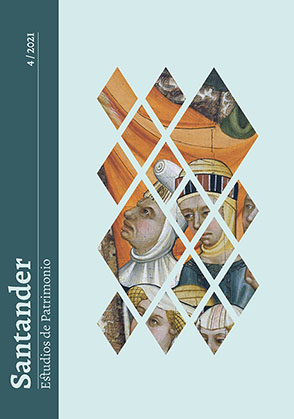The university as a driving force in a medium-sized city: past, present and future of the Campus in Zamora
DOI:
https://doi.org/10.22429/Euc2021.sep.04.01Keywords:
university architecture, military heritage, urban regeneration, Campus Viriato, ZamoraAbstract
This article evaluates the impact of the universities in medium-sized cities, taking the case of Zamora as a paradigm. Starting from the institution’s inception in this city, we analyze the process of the development of the Viriato Campus, nestled in an old military structure that the new teaching destination has allowed to preserve. This undertaking has regenerated and transformed its urban environment and has had a revitalizing effect on the town in recent decades. Although the current situation has stalled the potential expansion foreseen, the local and university authorities continue to work together to reactivate this institution, which has made it possible to foresee
the consolidation of this facility.
Downloads
References
ALMARAZ VÁZQUEZ, Mercedes y BLANCO SÁNCHEZ, José Ángel, “Consideraciones sobre el arquitecto José de Barcia”, Studia Zamorensia, 8 (2008), pp. 151-153.
ÁVILA DE LA TORRE, Álvaro, Arquitectura y urbanismo en Zamora (1850-1950), Zamora, Instituto de Estudios Zamoranos Florián de Ocampo, 2009.
BELLET SANFELIU, Carmen, “La inserción de la Universidad en la estructura y forma urbana. El caso de la Universidad de Lleida”, Scripta Nova. Revista electrónica de Geografía y Ciencias Sociales, 15 (2011), disponible: https://revistes.ub.edu/index.php/ScriptaNova/article/view/3403.
CAMPESINO FERNÁNDEZ, Antonio José y SALCEDO HERNÁNDEZ, José Carlos, “Campus universitarios en ciudades patrimoniales: contrastes entre Cáceres y Toledo”, CIAN‒Revista de Historia de las Universidades, 17/1 (2014), pp. 101-137.
CAMPOS CALVO-SOTELO, Pablo, La Universidad en España: Historia, Urbanismo y Arquitectura, Madrid, Centro de Publicaciones Secretaría General Técnica del Ministerio de Fomento, 2000.
CUESTA BUSTILLO, Josefina, “Fin de siglo: Modernización y democratización, 1986-2000”, en RODRÍGUEZ-SAN PEDRO BEZARES, Luis Enrique (coord.), Historia de la Universidad de Salamanca. Vol. I: Trayectoria histórica e instituciones vinculadas, Salamanca, Ediciones Universidad de Salamanca, 2002, pp. 357-401.
DÍAZ GONZÁLEZ, Mª del Mar, “La Universidad Laboral de Gijón (Asturias). El primer gran proyecto filantrópico gironiano al servicio de la patria: 1945-1978”, Hispania Nova: Revista de historia contemporánea, 15 (2017), pp. 191-216.
FERNÁNDEZ ALBA, Antonio, Espacios de la norma, lugares de intervención. 1980-2000, Madrid, Esteyco, 2000.
FERNÁNDEZ ALBA, Antonio, Premio Nacional de Arquitectura 2003. Libro de fábricas y visiones recogido del imaginario de un arquitecto fin de siglo 1957-2010, Madrid, Ministerio de Fomento, Centro de Publicaciones, 2011.
FLORAX, Raymond, The University: a regional booster? Economic impacts of academic knowledge infraestructura, Avebury, Aldershot, 1992.
FRECHILLA ALONSO, Mª Almudena, Desarrollo y consolidación del tejido urbano contemporáneo de Zamora entre 1864 y 1973, Tesis doctoral, Universidad de Salamanca, 2020.
GANAU CASAS, Joan y VILAGRASA IBARZ, Joan, “Ciudades medias en España: posición en la red urbana y procesos urbanos recientes”, en CAPEL, Horacio (coord.), Ciudades, arquitectura y espacio urbano 3, Almería, Instituto de Estudios de Cajamar, 2003, pp. 37-73.
INDOVINA, Francesco, “Sinergia tra comunitá universitá”, Archivio di Studi Urbani e Regionali, 60-61 (1997-98), pp. 85-113.
LÓPEZ BRAGADO, Daniel y LAFUENTE SÁNCHEZ, Víctor Antonio. “Los proyectos del cuartel de Infantería para la ciudad de Zamora en el primer tercio del siglo XVIII”, Studia historica. Historia moderna, 41/1 (2019), pp. 407-433.
LÓPEZ BRAGADO, Daniel; ARENAS PRIETO, Fernando y LAFUENTE SÁNCHEZ, Víctor A., “Juan Martín Zermeño y los planos de Zamora de 1766”, Goya: Revista de Arte, 371 (2020), pp. 100-115.
MARTÍNEZ PÉREZ, Juan Francisco y BLASCO SÁNCHEZ, Carmen,“Los campus como fragmentos de ciudad: la Univesitat Politécnica de Valéncia”, Ciudad y Territorio: Estudios Territoriales, XLIX/192 (2017), pp. 283-294.
MUSIL, Jirí, “The world of arts and the University”, en WUSTEN, Herman van der (ed.), The urban university and its identity. Roots, locations, roles, Dordretch The Netherlands, Kluwer academic Publishers, 1998, pp. 47-57.
RODRÍGUEZ ESTEBAN, María Ascensión, La arquitectura de ladrillo y su construcción en la ciudad de Zamora (1888-1931), Zamora, Instituto de Estudios Zamoranos Florián de Ocampo, 2014.
RODRÍGUEZ MÉNDEZ, Francisco Javier, “La construcción del edificio de la Escuela Normal de Zamora”, en HERNÁNDEZ DÍAZ, José María y RODRÍGUEZ MÉNDEZ, Francisco Javier (dir.), El edificio de la Escuela Normal de Zamora, Zamora, Instituto de Estudios Zamoranos Florián de Ocampo, 2008, pp. 23-91.
RUPÉREZ ALMAJANO, Mª Nieves, “Espacios para la investigación y la transferencia: una apuesta de la Universidad de Salamanca en el siglo XXI”, CIAN. Revista de Historia de las Universidades, 23/2 (2020), pp. 292-293.
SÁNCHEZ PINGARRÓN, Julián, Orígenes y desarrollo de la política de enajenación de infraestructuras militares en España. La reconversión de espacios militares para uso universitario, Tesis Doctoral, Madrid, UNED, 2018.
Published
How to Cite
Issue
Section
License
Copyright (c) 2021 Mª Almudena FRECHILLA ALONSO, Mª Nieves RUPÉREZ ALMAJANO

This work is licensed under a Creative Commons Attribution-NonCommercial-NoDerivatives 4.0 International License.
- The journal Santander. Estudios de Patrimonio keeps the copyright of the published texts, but it promotes and allows the reutilisation of them under the Creative Commons licence Attribution + Noncommercial + NoDerivatives 4.0, as it is explained in the section Licence and in this link.
- All the texts of this journal are published in the electronic edition of the journal under the indicated licence that allows to copy, use, spread, transmit and expose them publicly, as long as the author, the URL and the journal are mentioned, and the texts are not used for commercial purposes.
- The authors agree with the licence of use of this journal, with the autoarchive conditions and with the open access policy.
- In case of reutilisation of the works published in this journal, the editorial origin has to be mentioned. Thus, the following statement stablished by the editor has tu be included:
- Originally published in Santander. Estudios de Patrimonio in the [number] of the year [year in digit], University of Cantabria (Spain). Furthermore, a link to the version of the editor has to be provided, with this sentence: The original publication is available in Santander. Estudios de Patrimonio (including the link).

















